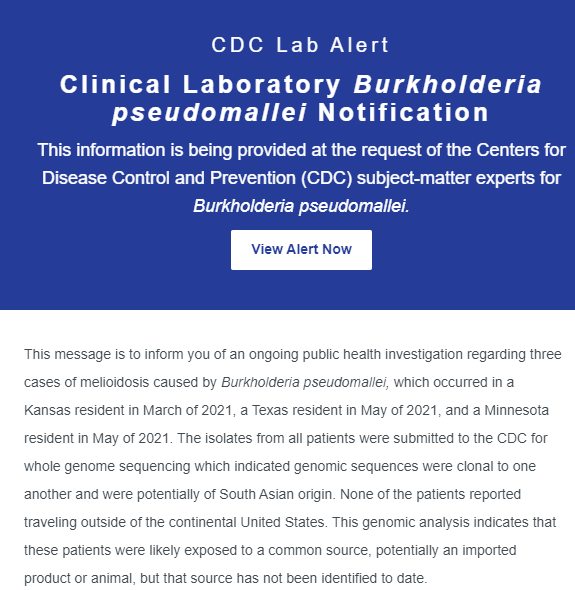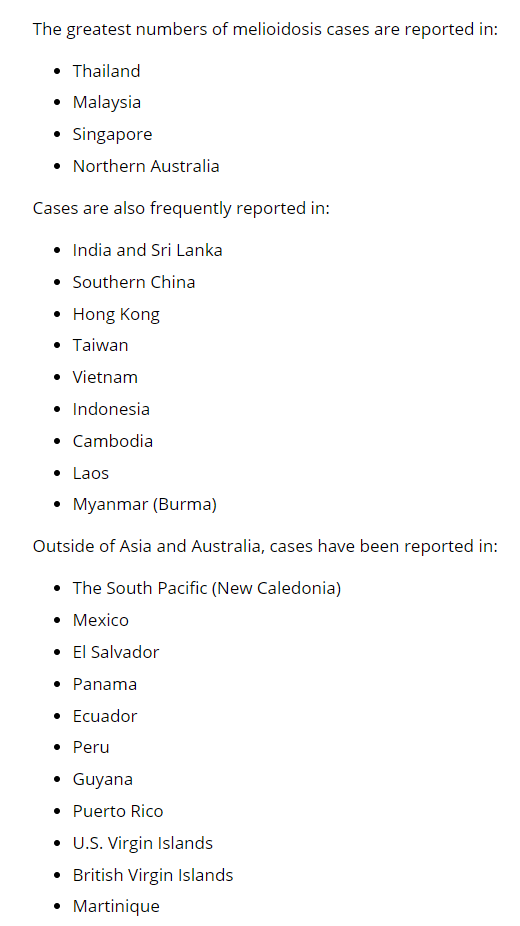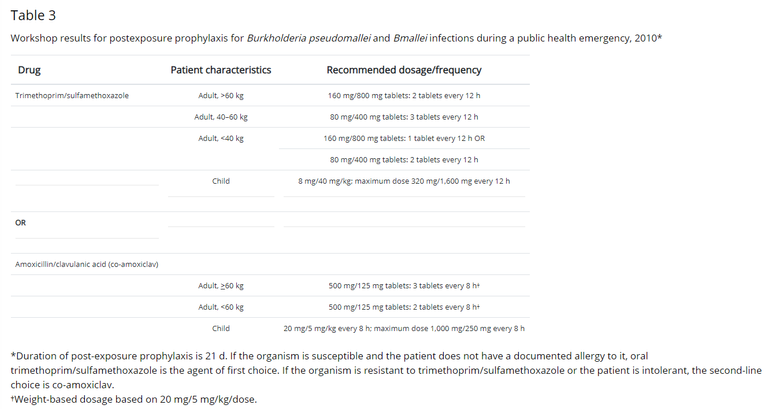A little over a week ago, I got an email notification from ASCP. ASCP is one of the accreditation agencies for laboratory and all things pathology here in the US. The email was actually an alert from the CDC. Turned out, there's an ongoing investigation of Burkholderia pseudomallei infections in the country. For simplicity's sake, the bacteria causes melioidosis. It's a very much understudied disease given its severe implications. After all, only a few hundred thousand people get it each year from some of the most populous areas of the world.

For more details about the health advisory, please visit HERE.
In short, multiple persons from different states acquired the infection. The isolated organisms are clonal to one another, which suggests a common source. It's worth noting that the main reservoirs of this bacteria are soil and water. By extension, foods grown in said soil and water can also be on the list. Now, you should have an idea why many places in the world boil their water before they drink it. So, it's possible that the pathogens are from imports from an endemic region. Or is it?

As the CDC states, B. pseudomallei is one of the potential bioterrorism agents. They've had studies that suggested correlation between dosage of bacteria and actual infection. The bacteria also infect animals such as sheep and goats. The unique thing about this bacteria is that they go inside your cells as part of the pathology. This even includes cells in your immune system. So, it's an invasive and evasive pathogen.
There is one interesting thing about the bioterror organisms we look out for in the labs. They usually don't transmit from person to person. Hence, the saying "highly infectious, but not very contagious". When reminded of this, it sort of makes sense that the world only gets a few hundred thousand cases a year. In case you are wondering, here is a list of countries from the CDC website:

As a laboratory worker, the most relevant information is what to do if I had an exposure? There is a 21-day post-exposure prophylaxis recommendation from the CDC. Unfortunately, it would seem that is not an official "matter of fact" approach as of right now. In other words, it's their best conjecture.

All I can say is, it's still shorter than the 60 days of antibiotic you'd need for Anthrax. Here's the source of the table above.
I guess I'll look forward to see what the CDC finds out in the near future.
Let me end by tying this into the Covid pandemic. This past year has shown that the US cannot hope to win in a biological warfare. At least, its citizens won't. And this is regardless of what you believe about the validity of the virus.
Posted with STEMGeeks
You think something like this may show up in the states over time?
Heard about people boiling their water but I have yet to had to do it.
I doubt it. It seems like a tropical thing as it mentions "naturally occurring" in the texts I've read.
HAIYA!
Green again today.
yeah. one of those days.
What a great article, and it was immediately associated with the fact that rural areas are the most affected by the virus due to poor sanitation, did you see this in a clinical examination?
Nah probably imported goods. We don’t get that bacteria in the States.
That’s not a bacteria. That’s a fungal infection.
Likely opportunistic given the focus on people with diabetes and the immunocompromised.
I say just wait and see how things unfold.